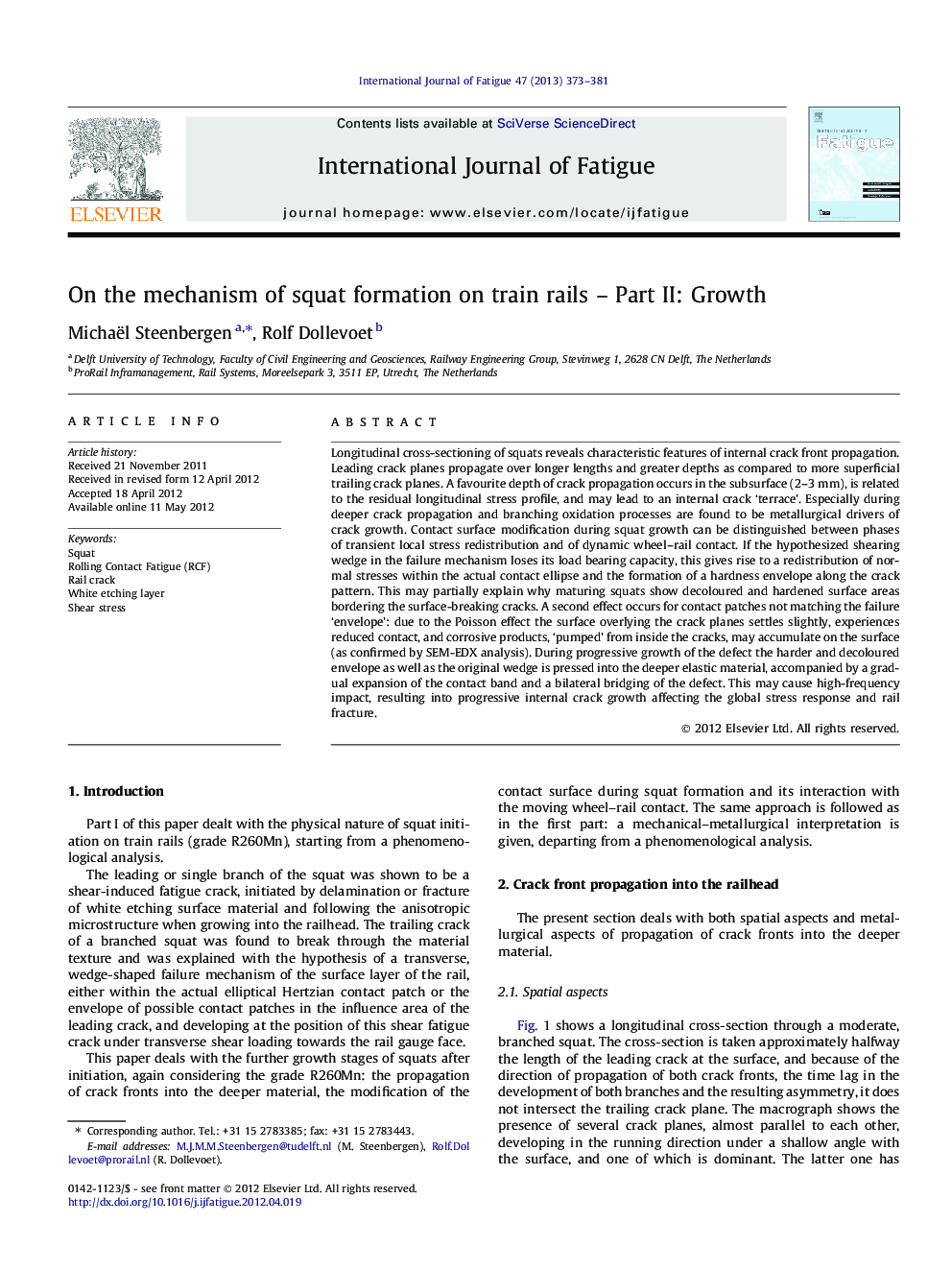| Article ID | Journal | Published Year | Pages | File Type |
|---|---|---|---|---|
| 780948 | International Journal of Fatigue | 2013 | 9 Pages |
Longitudinal cross-sectioning of squats reveals characteristic features of internal crack front propagation. Leading crack planes propagate over longer lengths and greater depths as compared to more superficial trailing crack planes. A favourite depth of crack propagation occurs in the subsurface (2–3 mm), is related to the residual longitudinal stress profile, and may lead to an internal crack ‘terrace’. Especially during deeper crack propagation and branching oxidation processes are found to be metallurgical drivers of crack growth. Contact surface modification during squat growth can be distinguished between phases of transient local stress redistribution and of dynamic wheel–rail contact. If the hypothesized shearing wedge in the failure mechanism loses its load bearing capacity, this gives rise to a redistribution of normal stresses within the actual contact ellipse and the formation of a hardness envelope along the crack pattern. This may partially explain why maturing squats show decoloured and hardened surface areas bordering the surface-breaking cracks. A second effect occurs for contact patches not matching the failure ‘envelope’: due to the Poisson effect the surface overlying the crack planes settles slightly, experiences reduced contact, and corrosive products, ‘pumped’ from inside the cracks, may accumulate on the surface (as confirmed by SEM-EDX analysis). During progressive growth of the defect the harder and decoloured envelope as well as the original wedge is pressed into the deeper elastic material, accompanied by a gradual expansion of the contact band and a bilateral bridging of the defect. This may cause high-frequency impact, resulting into progressive internal crack growth affecting the global stress response and rail fracture.
► A subsurface favourite crack depth occurs due to the residual stress distribution. ► Oxidation is important in deeper crack growth and branching. ► Accumulation of corrosive products on settled areas overlying crack planes explains lobe formation. ► The contact band expands bilaterally and the running surface settles locally. ► This triggers a dynamic wheel–rail interaction which may lead to global rail fracture.
